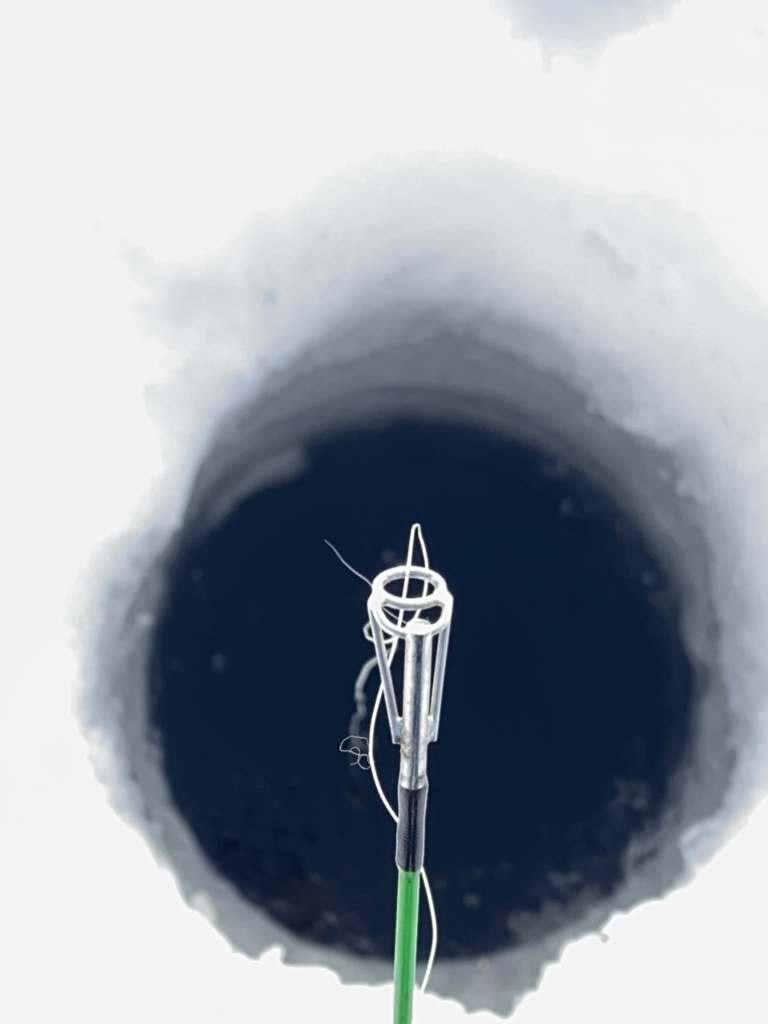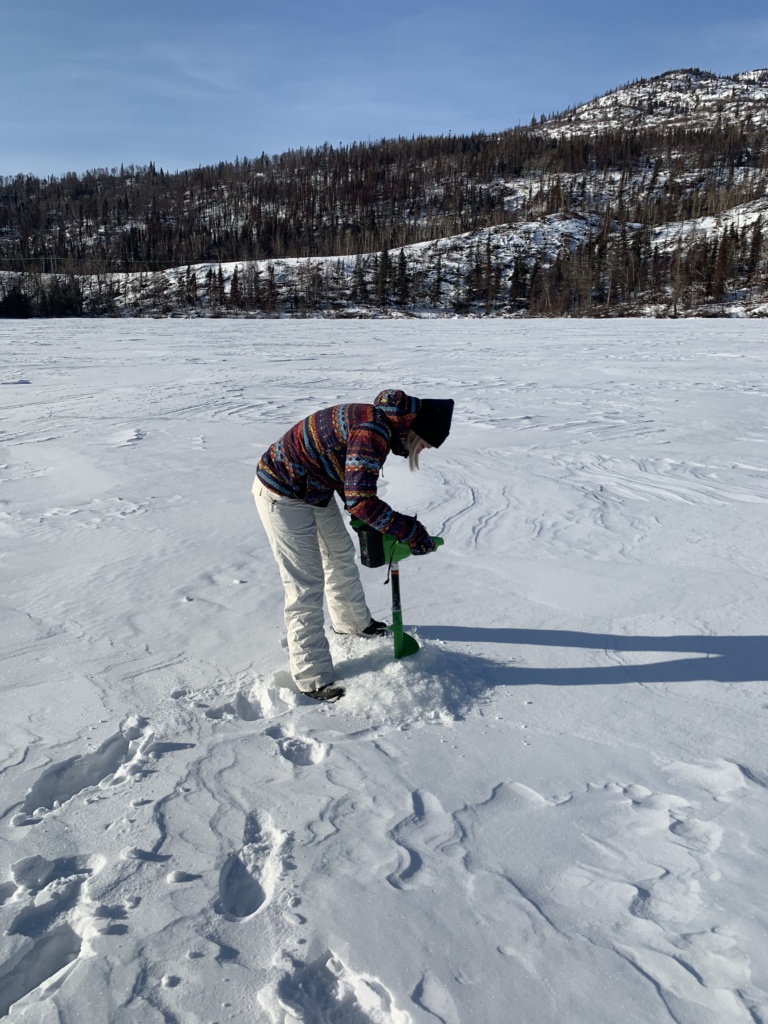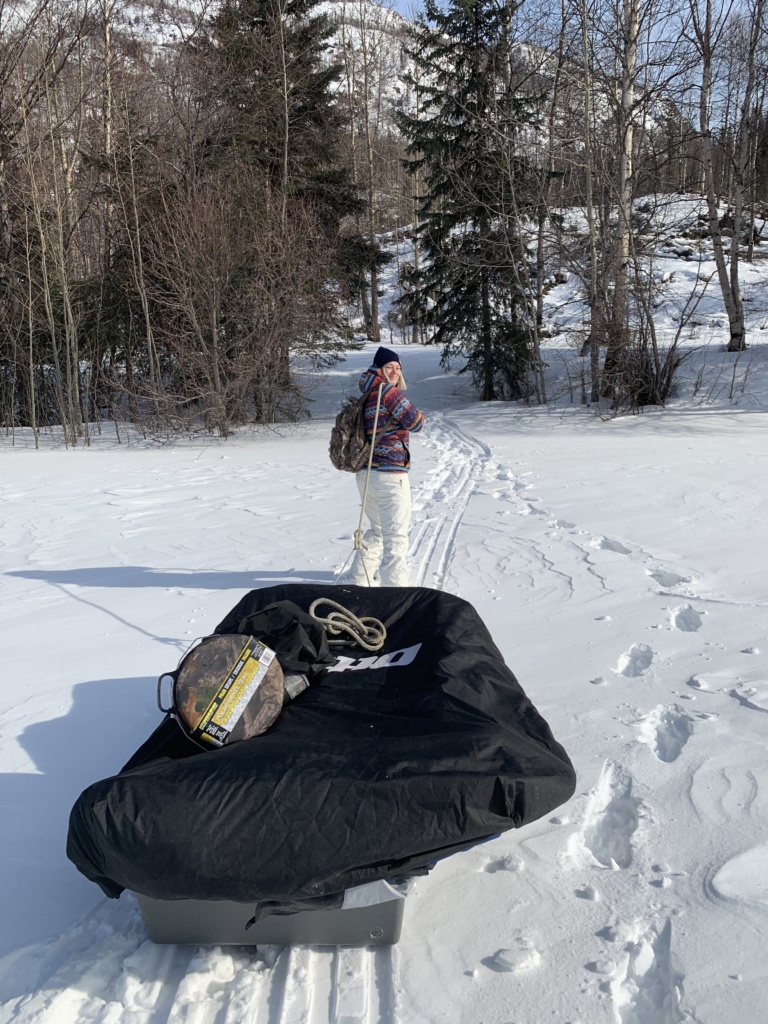
(What’s more “Alaskan” than ice fishing? Special correspondent Caleigh Jensen is embedded with a local family (h-e-r family), bringing you a boots-on-the-ground report. This is what real Alaskans do for fun on Spring Break…Scott)
Ice fishing on the Kenai Peninsula: A how-to guide
Feeling cooped up? To get out of the house while still practicing #SocialDistancing, plan an afternoon on the Kenai Peninsula and explore one of the lakes or rivers fully-stocked for winter ice fishing.
What you’ll need:
Fishing license — Purchase a sport fishing license on the Alaska Department of Fish and Game website for $29. The license is good for the rest of the year, and can be used for any type of sport fishing, including dip netting.
Ice auger — While hand augers are cheaper (around $40), battery or gas-powered augers (ranging from $200-$1,000) save a lot of time and energy when drilling holes in the ice. Find them at most any store that sells fishing gear — Cabela’s, Sportsman’s Warehouse, etc.
Ice fishing rod — You can buy one at just about any department store. Prices start as low as $10 at Walmart.
Tackle — Ice fishing tackle can range from a spinner to a jig to weights and bait. However, from my own experience, the most successful tackle combination is simply a salmon egg and hook.
Winter gear — Bright spring sun notwithstanding, being outside for a few hours will leave you with a chill. Dress in layers and pack full winter gear for your trip: a heavy coat, snow pants, winter boots with good traction and a hat and gloves. Hand and toe warmers can also add some extra warmth.

For a more luxurious experience, bring along:
Ice fishing tent — Temperatures below 0 degrees can make your fishing trip almost too cold to bear. An ice fishing tent blocks the wind, traps in heat, and keeps the snow off you for a more enjoyable experience. For extra warmth, pack a portable radiant heater that’s safe for enclosed areas. Ice fishing tents and heaters are available wherever you buy your fishing gear.
Skimmer — Ladling out the snow and ice from your fishing hole keeps it clear to drop your line in and reel fish up. Skimmers start at around $3 at Sportsman’s Warehouse.
Portable fish finder/underwater fishing camera — If you’re curious about what’s happening under the ice, a portable fish finder or underwater fishing camera lets you monitor the action.
Chair — If you can’t stand to stand for an entire afternoon, bring along a chair to give yourself a break. Tip: if you bring your supplies with you in a bucket, you can flip it over and make your own chair.
Rod holder — Give your arms a break too by putting your rod in a rod holder. Prices are as low as $2.50 at Sportsman’s.
Knife — To get the filleting out of the way, bring along a fillet knife to clean your fish before you head home.
Towel — After handling the bait and fish, it’s nice to have a towel to wipe the slime off your hands instead of on your snow pants.
I made the two-hour trek to the Cooper Landing area last Friday to fish on Jean Lake. It was a beautifully sunny day without a cloud in the sky, around 17 degrees. We packed our ice auger, tent, rods, skimmers, fish finder, rod holders, tackle, knives and chairs into a utility sled and dragged it across the Sterling Highway, down the trail and out onto the lake. The setup process is pretty quick. After less than 15 minutes, our holes were dug, the tent was set up, the rods were baited with salmon eggs and we were ready to fish.
My Dad, Uncle and I dropped our lines into the water until they hit bottom, then reeled in about a foot. I jigged my line up and down in hopes of attracting more fish, which may or may not help, but it at least keeps you moving. Although the fish usually take around 20 minutes to return after the auger scares them away, we had five bites in the first 10 minutes. I reeled up my first catch soon after — a whopping 4-inch land-locked salmon. I let the poor guy go in hopes of something bigger.
For the next hour, small fish teased us by nibbling and stealing our bait. After I let four more small guys go, I felt a promising tug on my line and reeled in a 14-inch Coho salmon. He put up a fight and flopped furiously in the snow before I could take a decent photo. Not the biggest catch, but it was still something to bring home to fry up.
Unfortunately, that was the height of our excitement for the trip. I reeled in a few more small salmon and one Rainbow Trout, but nothing worth taking home. They did make for some great photo-ops, though. Three hours and 20 not-so-impressive catches later, we were all fished out. We kept just one fish for dinner, filleting it on site so it was ready to cook up later.
If you’re looking for a fun and relatively easy way to get out of the house this winter, grab some gear, pick a lake and plan your next ice fishing adventure today. For a full list of stocked and wild waters available for ice fishing in Alaska, visit the Alaska Department of Fish and Game website.
Share this Post




